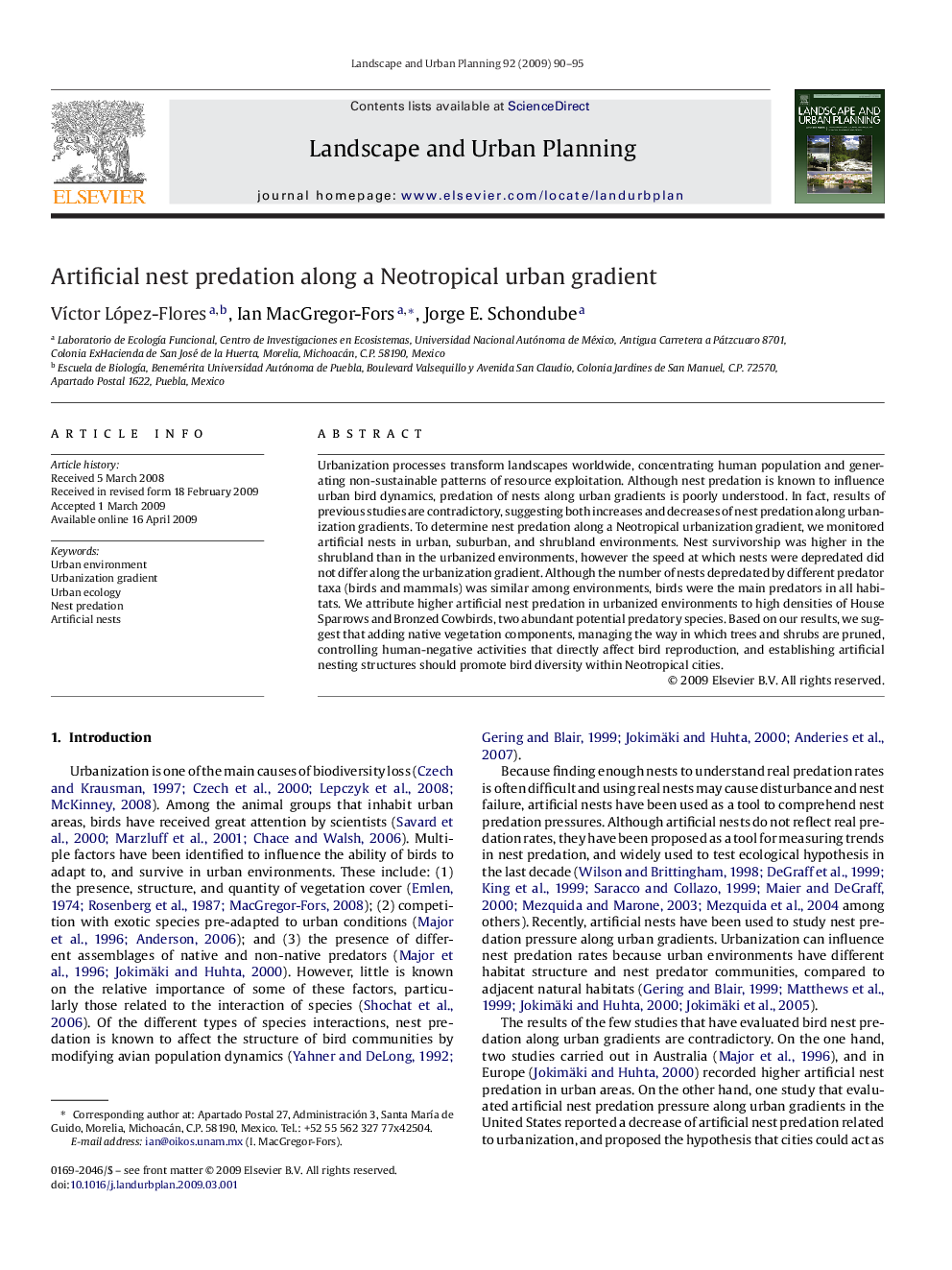| Article ID | Journal | Published Year | Pages | File Type |
|---|---|---|---|---|
| 1050272 | Landscape and Urban Planning | 2009 | 6 Pages |
Urbanization processes transform landscapes worldwide, concentrating human population and generating non-sustainable patterns of resource exploitation. Although nest predation is known to influence urban bird dynamics, predation of nests along urban gradients is poorly understood. In fact, results of previous studies are contradictory, suggesting both increases and decreases of nest predation along urbanization gradients. To determine nest predation along a Neotropical urbanization gradient, we monitored artificial nests in urban, suburban, and shrubland environments. Nest survivorship was higher in the shrubland than in the urbanized environments, however the speed at which nests were depredated did not differ along the urbanization gradient. Although the number of nests depredated by different predator taxa (birds and mammals) was similar among environments, birds were the main predators in all habitats. We attribute higher artificial nest predation in urbanized environments to high densities of House Sparrows and Bronzed Cowbirds, two abundant potential predatory species. Based on our results, we suggest that adding native vegetation components, managing the way in which trees and shrubs are pruned, controlling human-negative activities that directly affect bird reproduction, and establishing artificial nesting structures should promote bird diversity within Neotropical cities.
